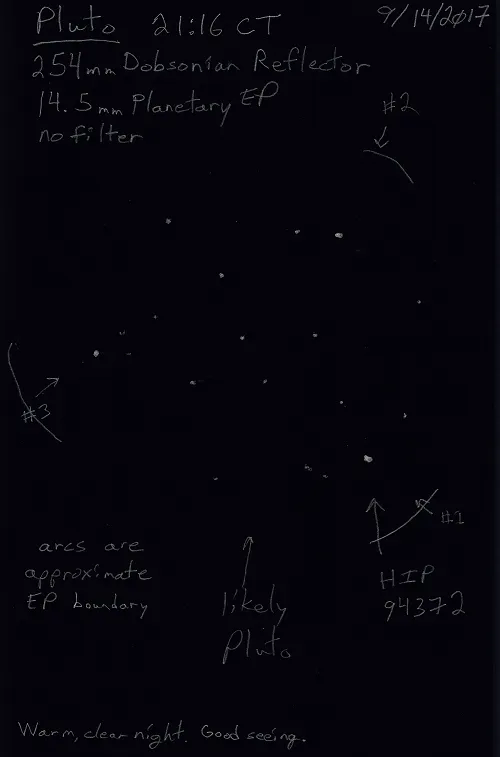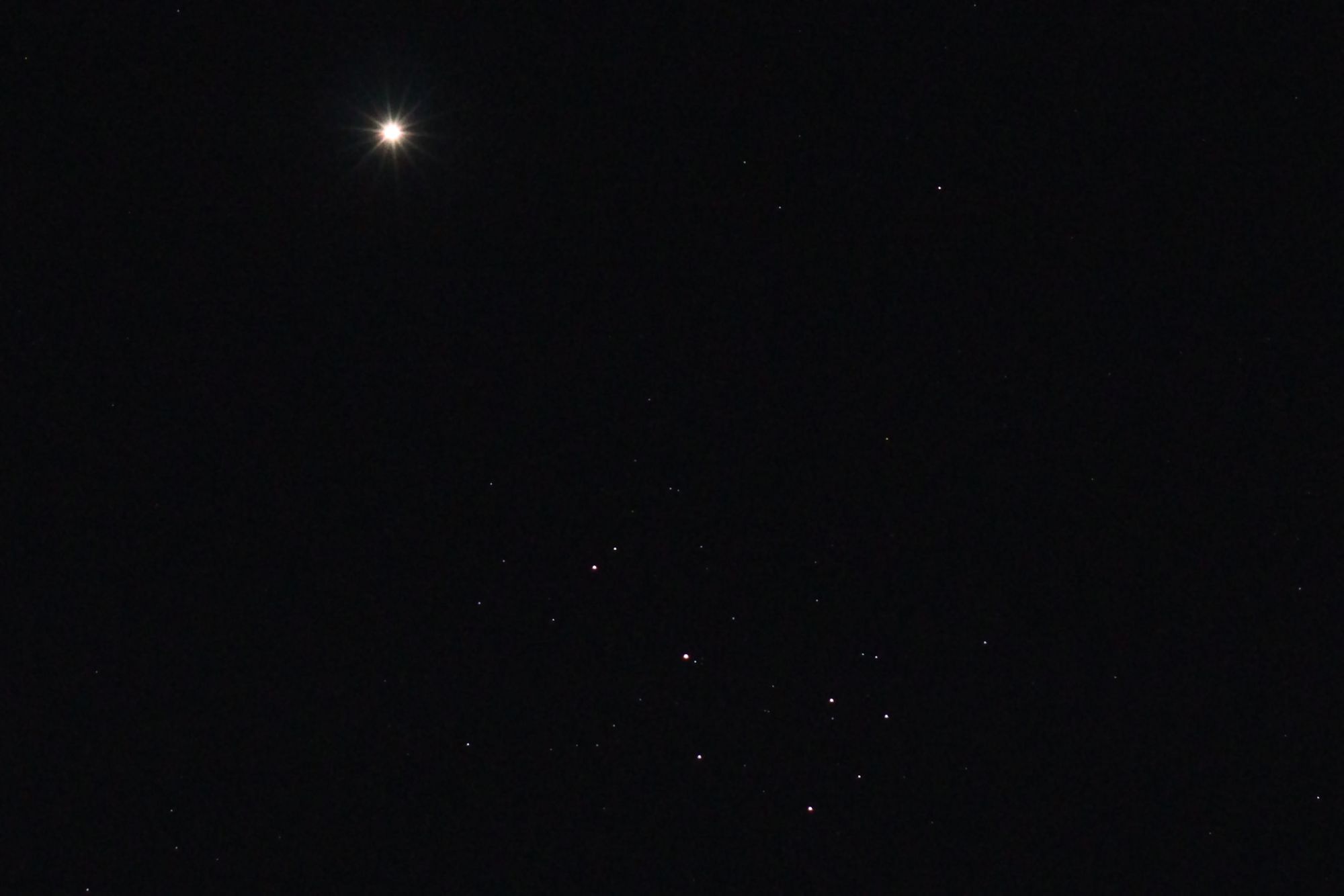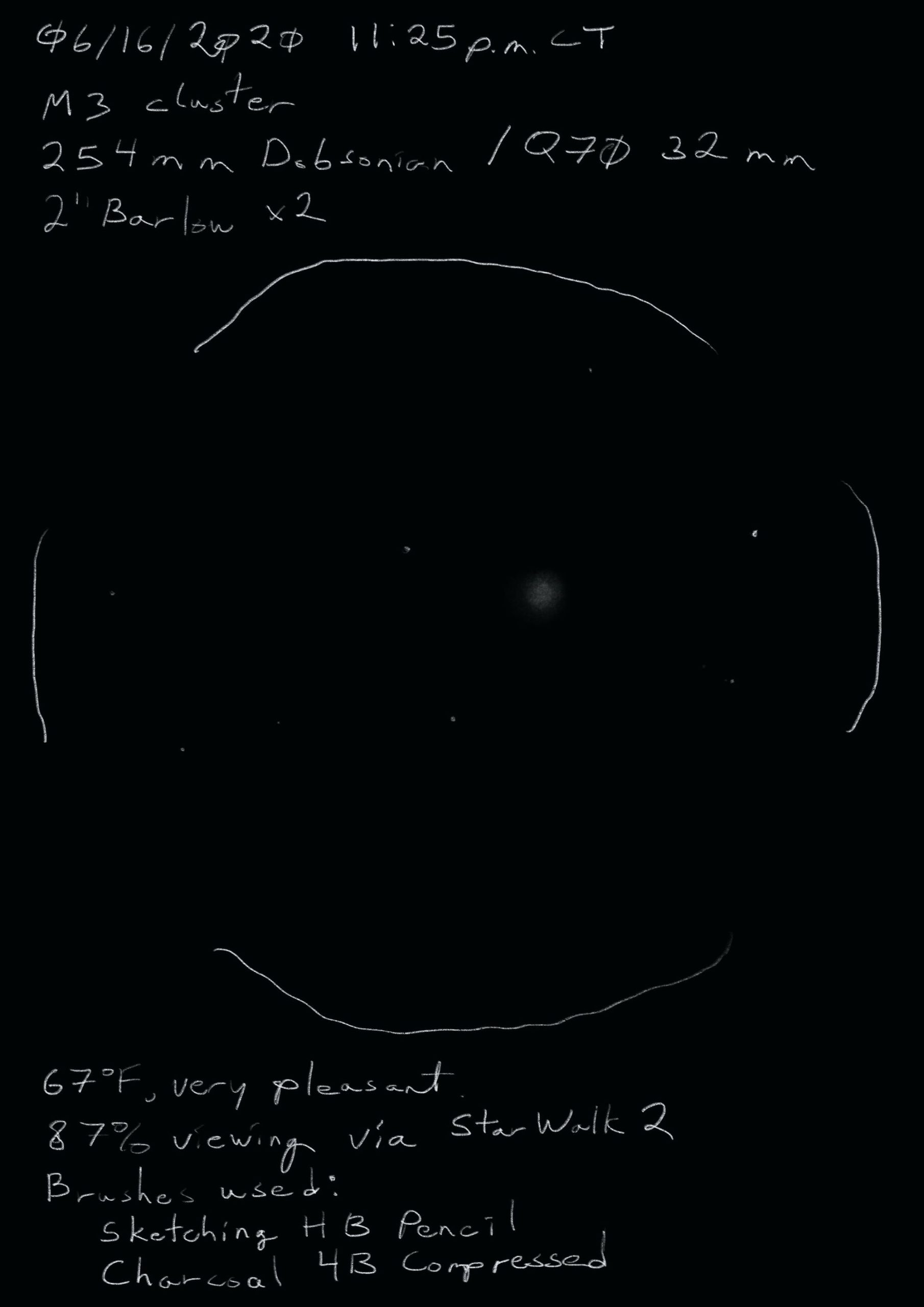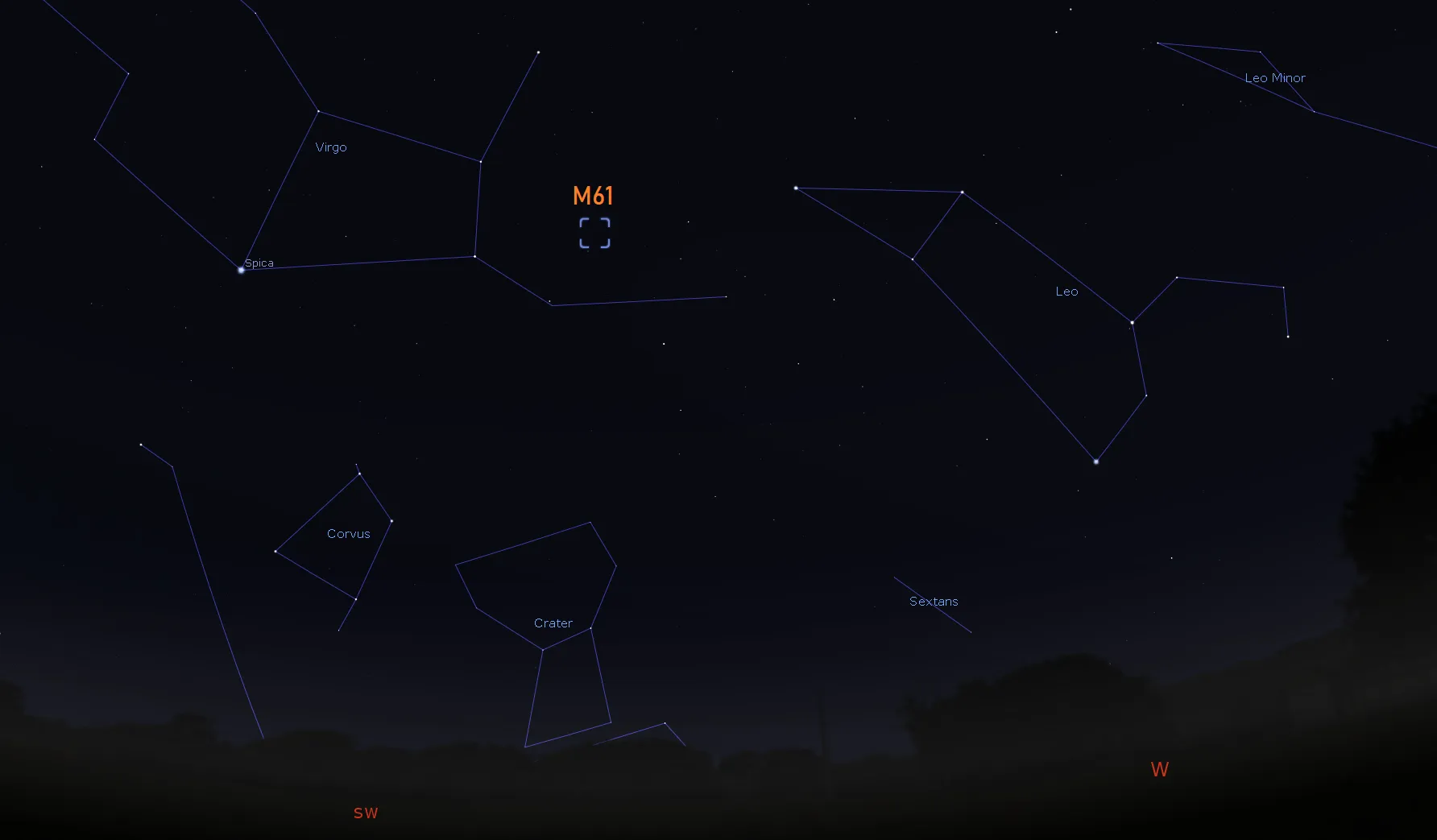“I really want to try to find Pluto again one more time this season…If I do get a chance, I will post a follow-up next month.” – Me, August 29th
With the Moon safely out of the way and a clear sky opportunity available, last week I resumed my quest to find Pluto. Much of this post relies on information from my first attempt last month, and so I will be referring to that post frequently.
Recall that I leveraged the easily recognized “teapot” asterism in the constellation Sagittarius to star hop over to the approximate location of Pluto. The main anchor star in the area of Pluto, both last month and now, is Albaldah. Albaldah and a few nearby neighbors are the last stars I can see unaided. So targeting Albaldah with my telescope was the first order of business.
The journey past Albaldah was guided with the help of both the Stellarium app on my tablet as well as my prior post. I should note here that the “app” version of Stellarium is far less detailed than the PC version when investigating such faint objects in small spaces. Further, based on my two observation sessions, I now believe there is an error in the PC Stellarium map, which I will explain in a moment.
Using the same 2″ Q70 eyepiece as last month, I quickly found HIP 94372, the 6.35 magnitude “mini-anchor” star near Pluto visible only with my telescope. From HIP 94372 I located the 8th-magnitude star pattern I nicknamed k-lambda, assuring that I was in the correct vicinity.
At this point I was aggressively looking at the images from my prior blog post, the Stellarium app, and my telescope eyepiece. I decided early on that it would be best to switch to a higher magnification than the 2″ eyepiece allowed, so I changed to my 1.25″ 14.5mm Planetary. This eyepiece illuminated a much clearer view around HIP 94372.
Then I began sketching, referring to Stellarium only to assure that I was still in the location I wanted to be and drawing at the correct perspective size. In my drawing above (Figure 2.1) it is difficult to see which stars are faint and which were really faint to the point that averted vision was necessary to see them. The three stars I labeled as #1, #2, and #3 were the brightest, forming a triangle. The three arcs were the approximate boundaries of the eyepiece.
With my sketch partially done, I had to make an assumption – that the small star close to HIP 94372, identified only by the Stellarium PC version, does not exist. This probably threw me off last month, at least a bit, in determining if I truly had seen Pluto. It is listed at magnitude 9.10, which should be easily visible, especially at the higher magnification I was now using with the 14.5mm eyepiece. A 9.10 star should only be slightly dimmer than k-lambda, as well as the three stars forming the main triangle in my sketch. And the few stars I drew around HIP 94372 are extremely faint, well past magnitude 9. So either this star does not exist or its magnitude is incorrect in Stellarium.
Returning to the Pluto hunt, I knew it should be located within the three-star triangle I sketched. In the figure below from Stellarium, I edited out the false star, as well as flipped the image to correspond to what I drew at the telescope that night. Pluto is represented as a very, very tiny dot:
Remember, again, that most of these stars are very faint. To help gauge where Pluto might be, I imaged a micro asterism forming a dipper or serpent, which starts at the star HIP 94338:
I could see this dipper easily at the telescope so long as I knew where HIP 94372 was. I also knew, then, that Pluto had to be just below (actually above, but the telescope reverses the image) this dipper and between HIP 94372 and HIP 94338.
Did I actually find Pluto? I identified, at the telescope, three possible candidates, all hard to see without averting my eye a bit. That night while still at the telescope, I drew an arrow pointing to the one I thought was most likely. The other two candidates were to the right, the nearest dots above and below the one pointed to by my upward sketched “likely Pluto” arrow (see Figure 2.5).
Here is my sketch again, this time with the serpent/dipper lined, the three bright stars circled in orange, and the dot most likely to be Pluto, as determined afterward by comparing to both versions of Stellarium (iPad and PC):
The best way I can confirm/reconfirm which dot was Pluto would be to sketch the area around HIP 94372 once Pluto has moved significantly. Unfortunately by next month (after the next Full Moon passes), Sagittarius and Pluto may be too low in the sky for me to draw again, mostly due to the impacts of light pollution as they near the horizon. And so, true final confirmation may have to wait a good seven to nine months, as the Earth and Pluto revolve around the Sun, beckoning the dwarf planet back into our East sky by late Spring 2018.








